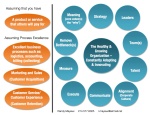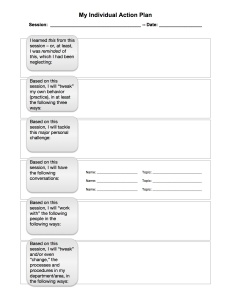Recently, I posted this: You Need a Year’s End/Year’s Beginning Leadership Planning Retreat – Here’s What to Do at Your Retreat. That post took me back to the excellent guidebook for any business leader, Mastering the Rockefeller Habits by Verne Harnish. So, I keep thinking about organizational structure, and the things to do for any and every leadership team.
So, here’ s my thought for today – if you’re too busy to learn, you really are too busy.
And that’s true for you as an individual– and for your leadership team.
And, if you leave it for each individual on the leadership team to “learn” on his or her own, you’re missing a pretty good bet. First, they are too busy. Second, “learning together” has great benefits.
So, as a leadership team, you need to schedule some learning time – regularly – set in stone in your calendar – that you keep on your schedule as though it were a sacred time. (It almost is).
In Mastering the Rockefeller Habits, Verne Harnish recommends regular meetings – daily, weekly monthly, quarterly, yearly… Each meeting serves a different purpose. Here’s his recommended breakdown:
• meetings overview:
• daily & weekly – execution
• monthly – learning
• quarterly and annual – setting strategy}• daily meeting, an imperative
• choose an “irregular” time (e.g., 8:08 am)
• setting: avoid sitting comfortably (stand!)
• the more the merrier
• the agenda: what’s up, daily measures, and where are you stuck?• weekly meeting
• more issues oriented
• to succeed, it must be after a week of daily meetings (they need each other/feed off of each other)
• five minutes: good news
• ten minutes: the numbers
• ten minutes: customer and employee feedback
• 30 minutes: a single issue (Harnish calls this a “rock”)
• closing comments• monthly meeting – agenda is learning
For the monthly meeting, you need a true learning agenda. And, I would argue that this should be some kind of “big picture” learning. In other words, we’re not talking about learning how to use the latest version of some software program. Yes, you need to learn this – but not in this session. We’re talking here about some kind of “stretching; make-yourself-and-your-team think” learning.
Do I need to repeat the obvious – that leaders who keep moving forward read a lot? And exposure to key ideas in the best books is a great conversation starter and learning facilitator. And then, after “content, there is… at the end of such a session, there is always one critical question that you need to answer: “what will I/we do with what we have just learned?” Because, until you start doing something differently, you have not learned.
Here’s how the Heath brothers put it in Switch:
For anything to change, someone has to start acting differently. Your brother has to stay out of the casino; your employees have got to start booking coach fares. Ultimately, all change efforts boil down to the same mission: Can you get people to start behaving in a new way?
What you do; how you behave – these are the signals that you have learned something new.

(Click on image for full view)
Now, my recommendation is that you plan your learning meetings very carefully – very intentionally. Get your top team together, and ask – where do we need to beef up our knowledge around here? Take another look at my 12 Vital Signs of Organizational Health “bubbles” — should you have a session on: your why; strategy; leadership; teams; buy-in/alignment; communication?… just go around the circles, and ask, “which would help us the most right now?” And schedule a learning session on each of these. After all, you’ve got 12 sessions available to you in a year’s worth of monthly meetings. Plan them well. Use them well. (In my e-book, 12 Vital Signs of Organizational Health, I recommend good books for each of these areas. In fact, my e-book might provide a good overview to “kick things off”).
What to do in these meetings? You could select a good essay for each participant to read (Jeff Bezos has his folks read them in silence together. A brilliant idea! Read about it here.) Or, consider our business book synopses, available from our web site, 15minutebusinessbooks.com. The handouts provide much of the key content from the book. You could also listen, as a group, to the audio recordings of our presentations. (Each recording lasts around 15-17 minutes – none more than 20).
But, here’s the key. If you intend to take learning seriously – and you should! — then you have to plan your sessions, schedule your sessions, and then actually have the sessions.

And, at the conclusion of each learning session, have each person take a few minutes, in silence, and fill out their “Individual Action Plan.” And then, of course, they have to follow their individual action plan.
(I’ve provided the form I use with some groups I speak to. Feel free to print it out, and use it in your meetings).
Learning is a serious business. And I am confident that if follow this process, faithfully, for a full year – you and your team would make some real progress.
And, if you are too busy for regular learning sessions – you really are too busy!
